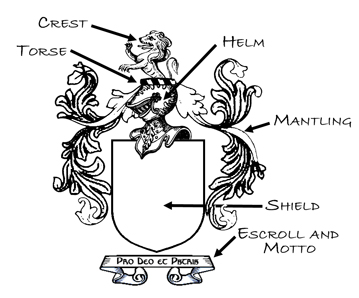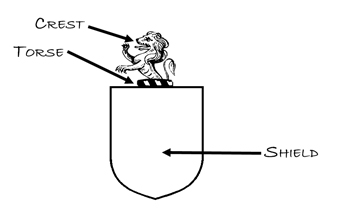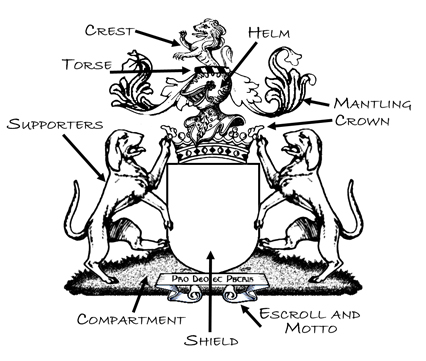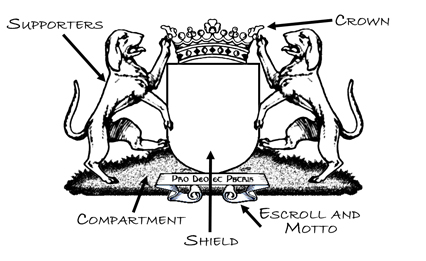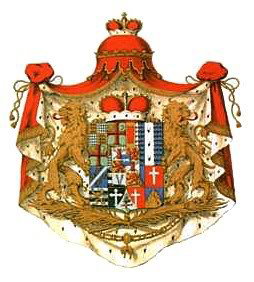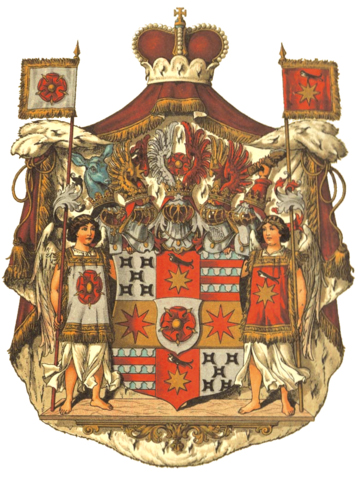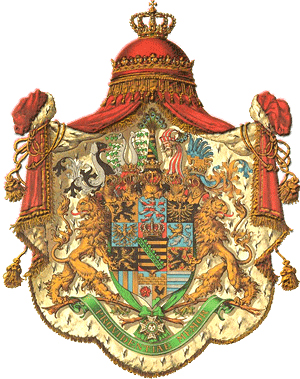
|
History
of the Noble Company |
BASIC PARTS OF A COAT OF ARMS |
|
|
|
|
SHIELD: The most basic part of armorial bearings. (See History of Heraldry.) ESCROLL: A stylized scroll, usually below the shield, containing the motto of the individual or family. MANTLING: A stylized rendering of a knight's mantle/cape, typically (but not always) depicted shredded as if it had been shredded in battle. HELM: Deriving from the martial origins of heraldry in the Roman Empire and the middle ages, in some national customs, it denotes the rank of the individual. In other national customs, it is purely symbolic, the design being chosen for artistic purposes, but still within historic customs of heraldry. TORSE: A wreath of two twisted pieces of cloth or ribbon in the knight's primary colors. The torse (also sometimes called a wreath) can sit atop a helm or directly on the shield if the helm is not used. Sometimes instead of a torse is used a simple coronet of three leaves or a chapeau, a red cap with ermine lining. CREST: An additional symbol particular to the individual or family. It must always "issue," or proceed from a torse, a simple coronet, or a chapeau. Sometimes the crest and shield are used together without additional embellishment. Sometimes the crest is used by itself as a symbolic representation of the individual or family.
SUPPORTERS: Often animals, supporters are seen frequently in the arms of persons of high rank. They "support" the shield and draw attention to it. Supporters are a form of heraldic embellishment that developed as the art and science of heraldry evolved over time. COMPARTMENT: Supporters must stand on something. Often this is a compartment, or depiction of a piece of turf. Sometimes it is scrollwork referred to as a gaslight fixture or "lower mantling." CROWN: Crowns refer to the rank of royals or nobles. In Britain, it is called a coronet instead of a crown except for the sovereign. In Holy Roman Empire and general continental usage, the crowns of nobles are typically jeweled, while those of British nobles are unjeweled. British noble coronets have a red cap of maintenance (a velvet cap), while in the continental systems, the cap of maintenance is not used except by some princes and, in France, by Peers of France. The style of crowns and coronets, as well as the rules governing their use, varies from nation to nation. Americans and others resident in Republics who are entitled to the use of a crown or coronet do so in accordance with the rules and customs of the country of origin of their title.
MANTLE AND PAVILION: The mantle (not to be confused with mantling) is an heraldic embellishment that appears as a robe of estate (almost always red with ermine fur lining). Sitting on top of the mantle is the individual or family's crown of rank. A pavilion is generally limited to royalty, though sometimes used by serene princes. It is a dome-like structure that sits at the top of the mantle, with the crown on top of the pavilion. Pavilions originally were the tents set up on a field for royals and nobles. The heraldic representation evolved from this original practical use. Imperial mantles pavilions are often gold rather than red. Mantles and pavilions are generally usually only used in the most formal and important of situations and are typically found to be impractical for common use.
|
Entire Contents Copyright © 2008-2015. Noble Company of Saint Mary of Walsingham. All Rights Reserved.
